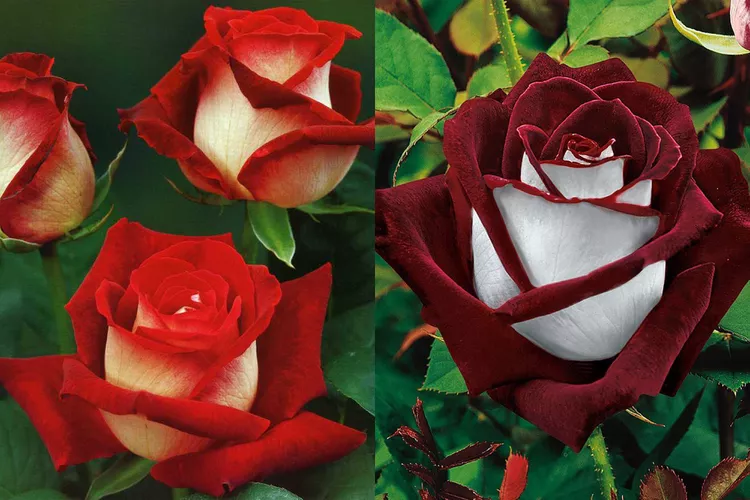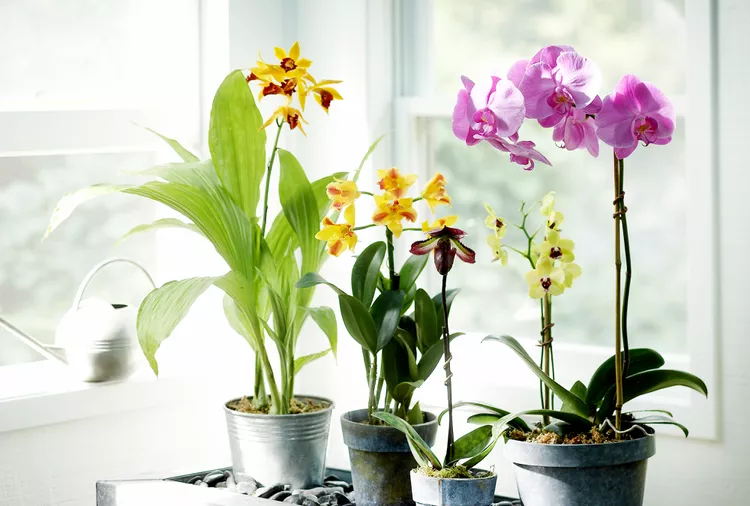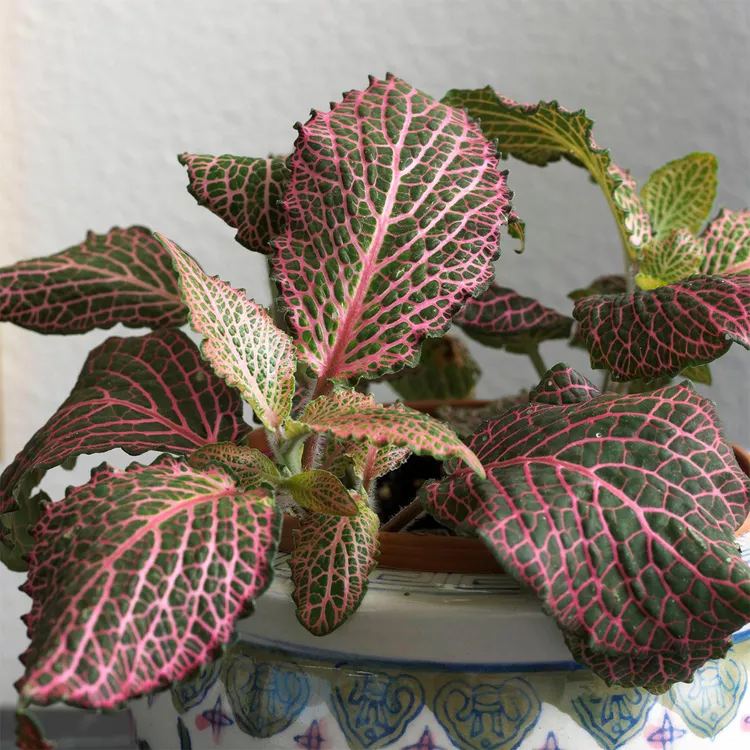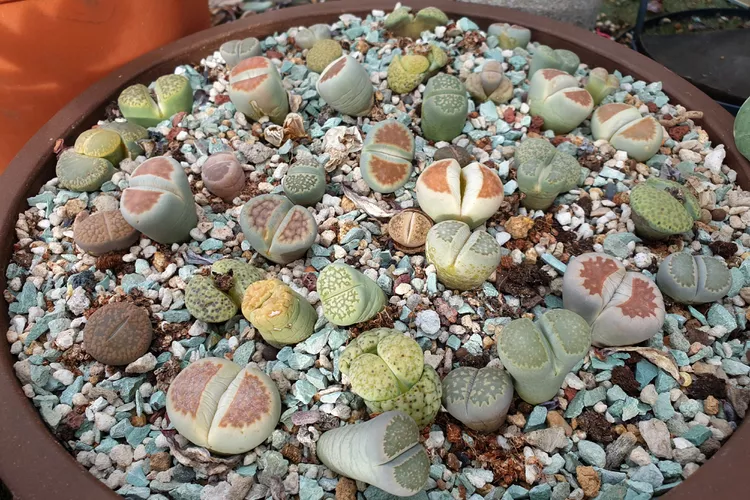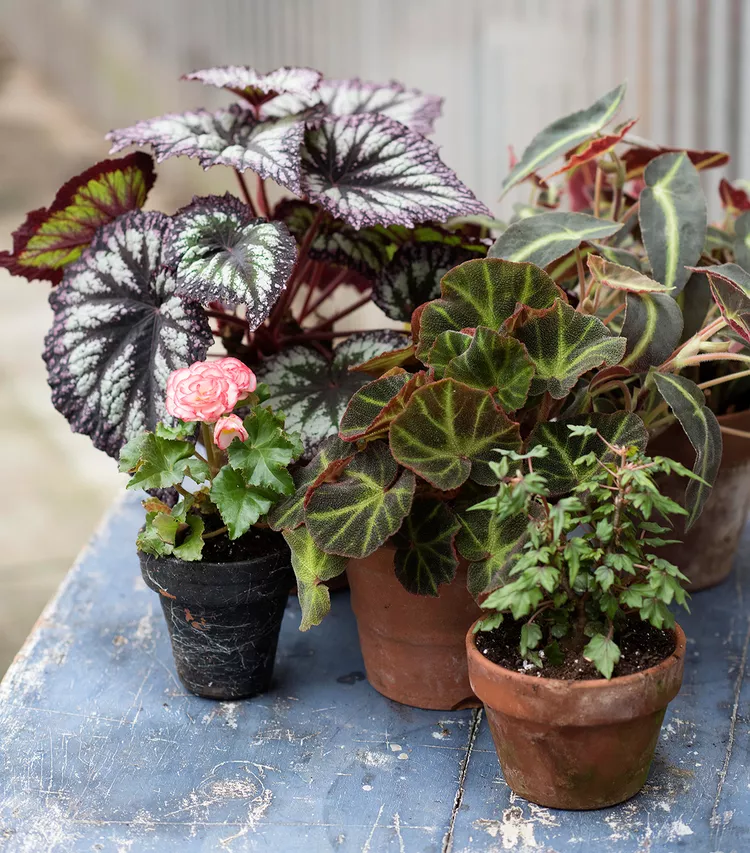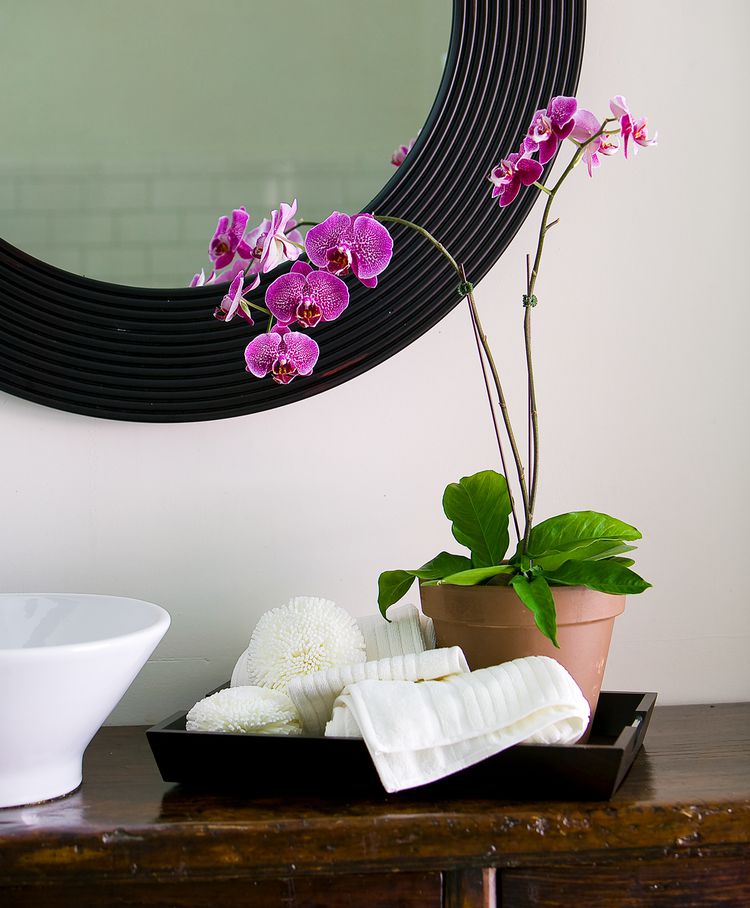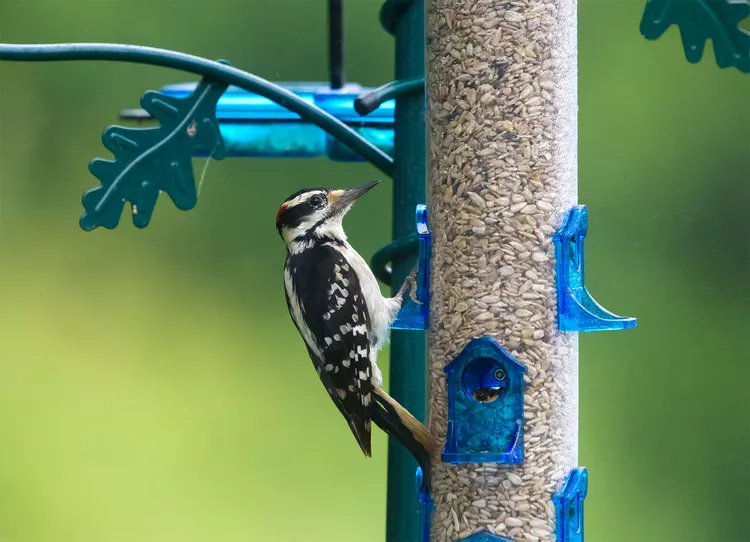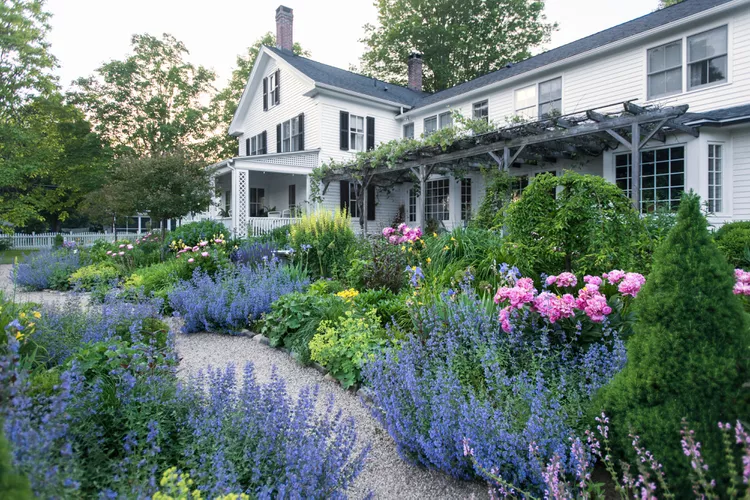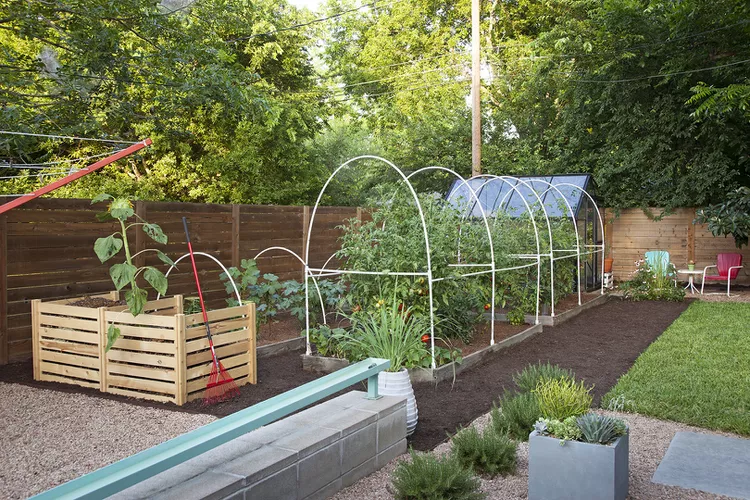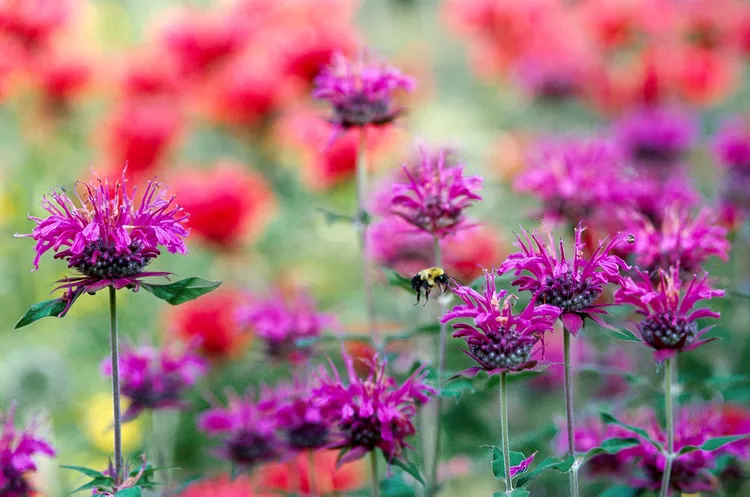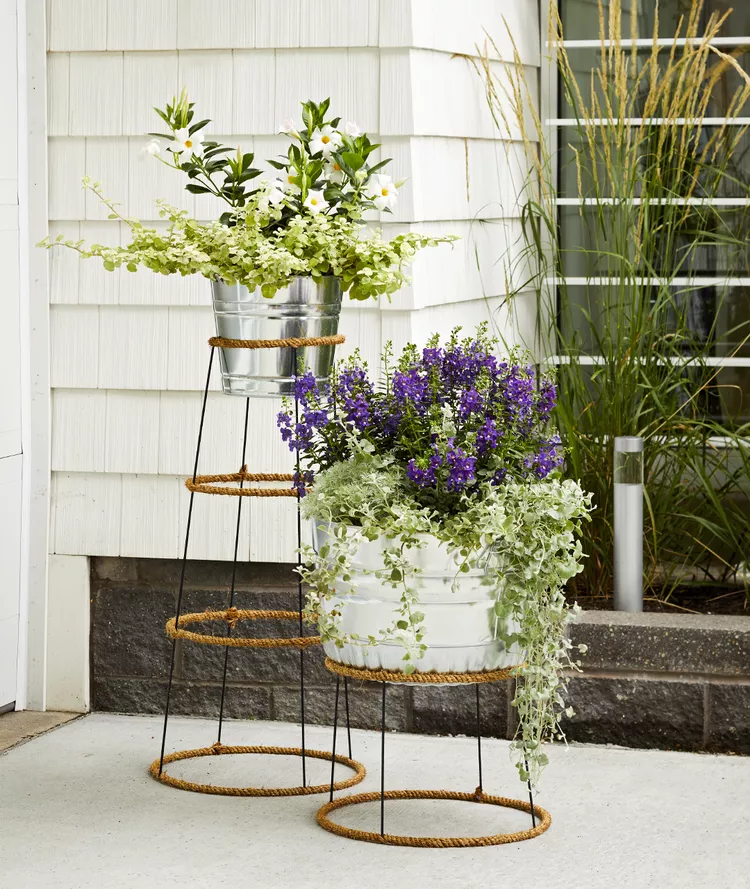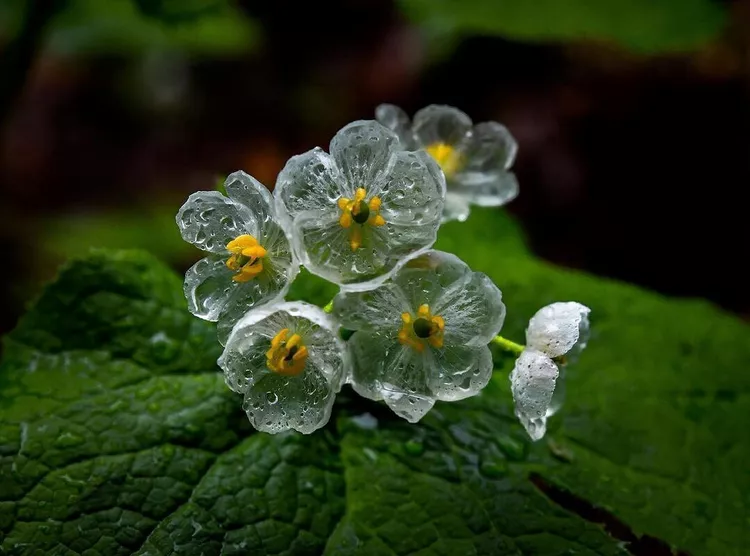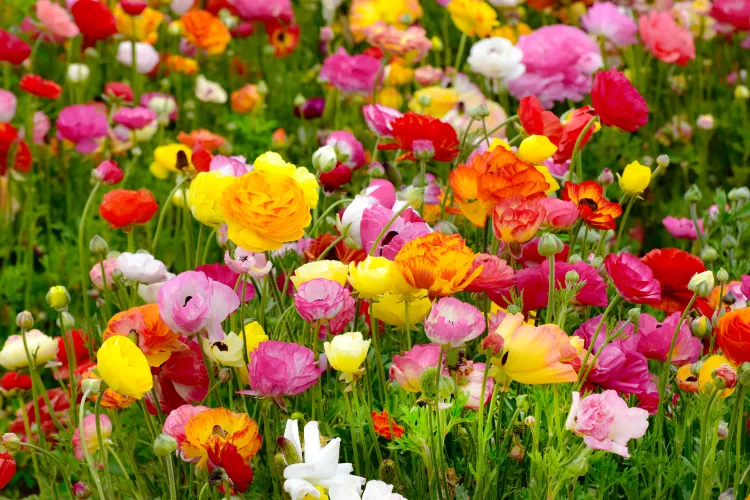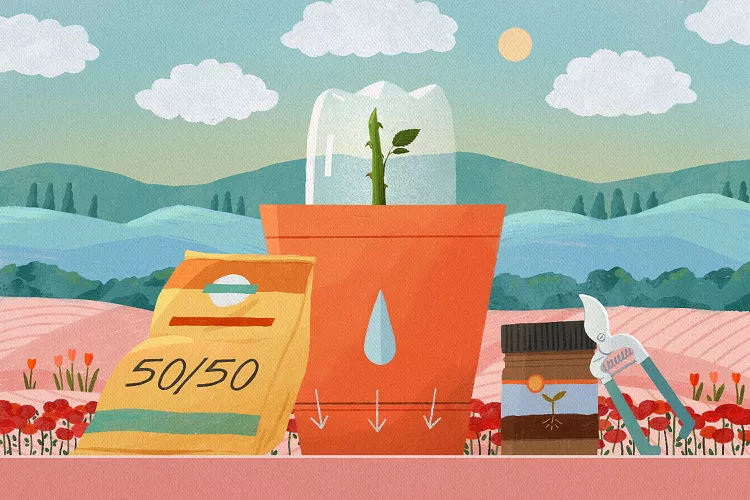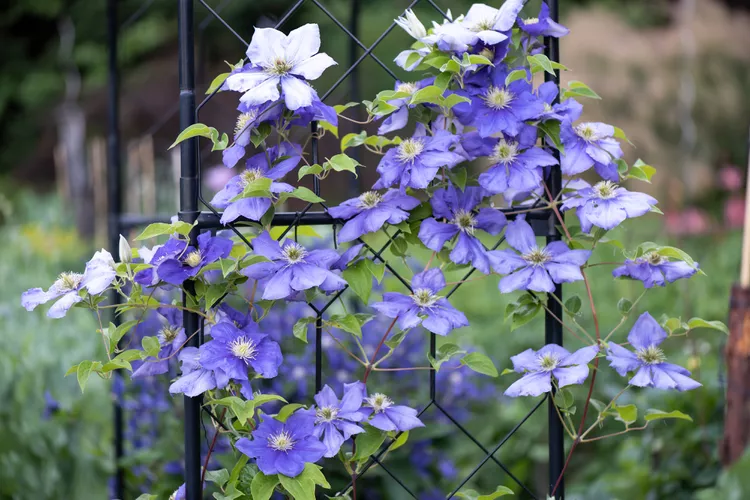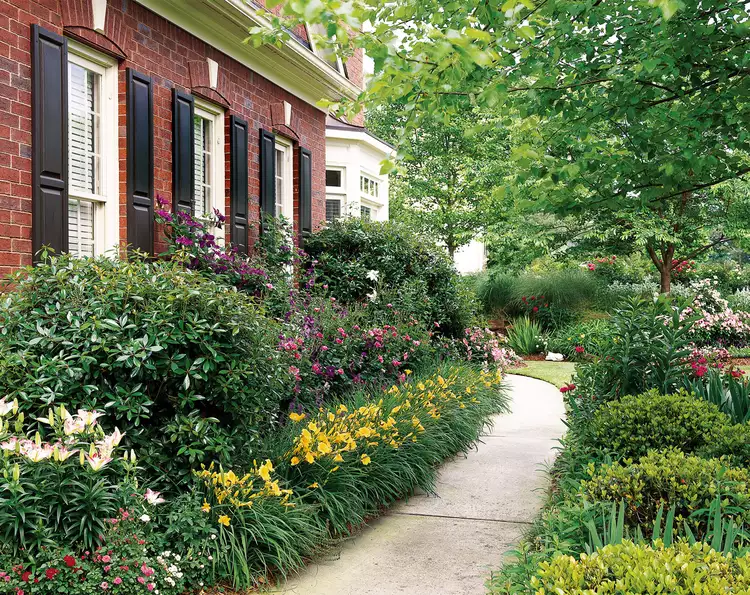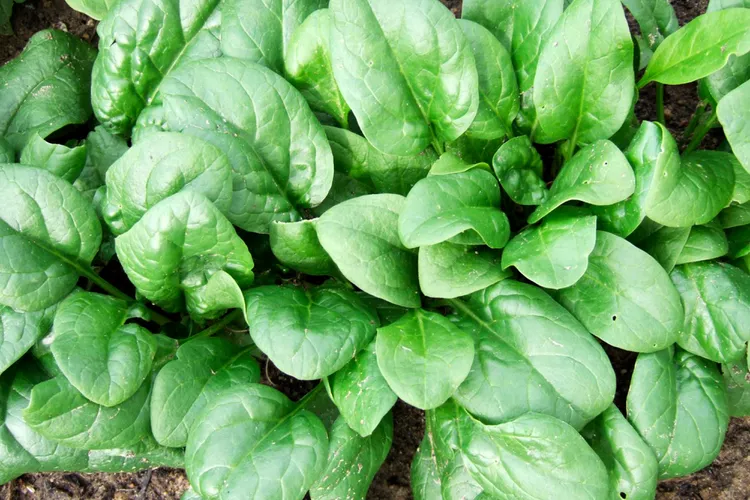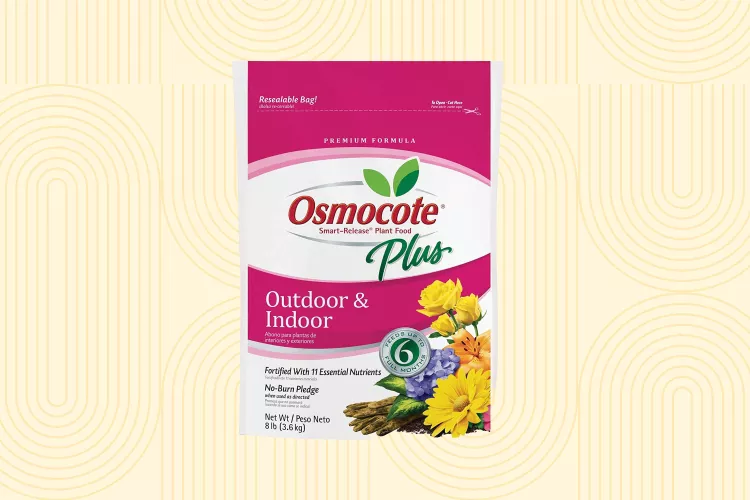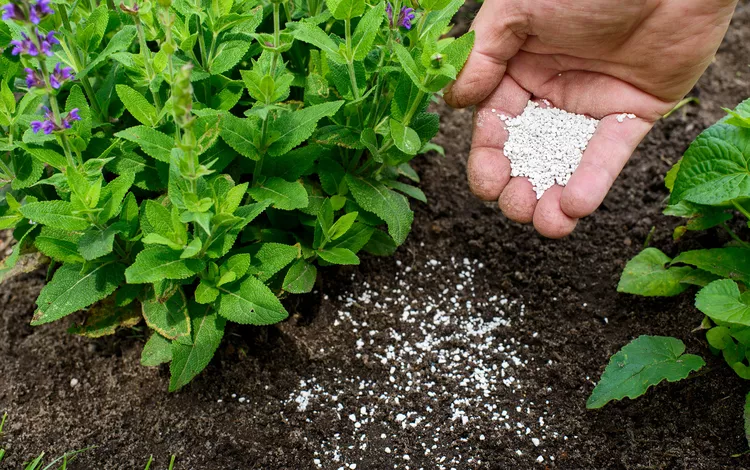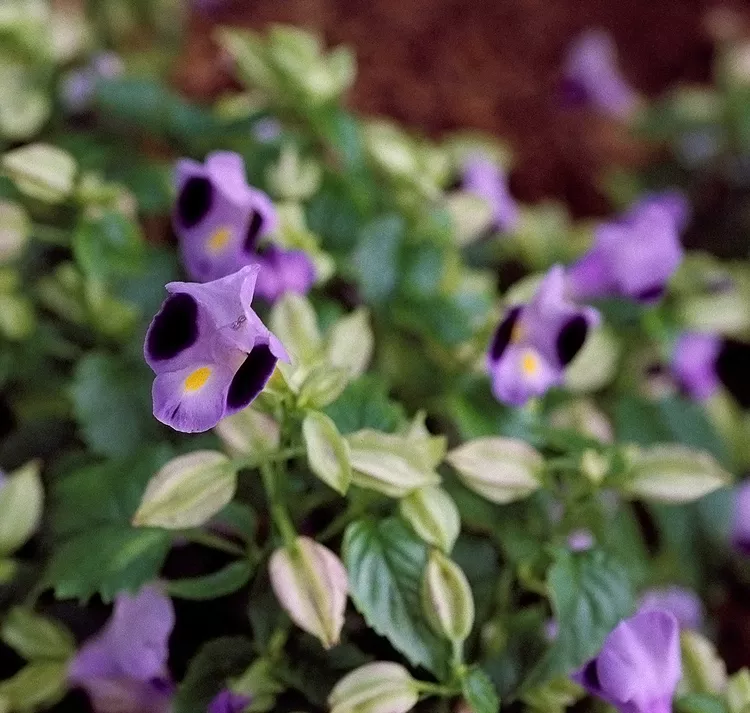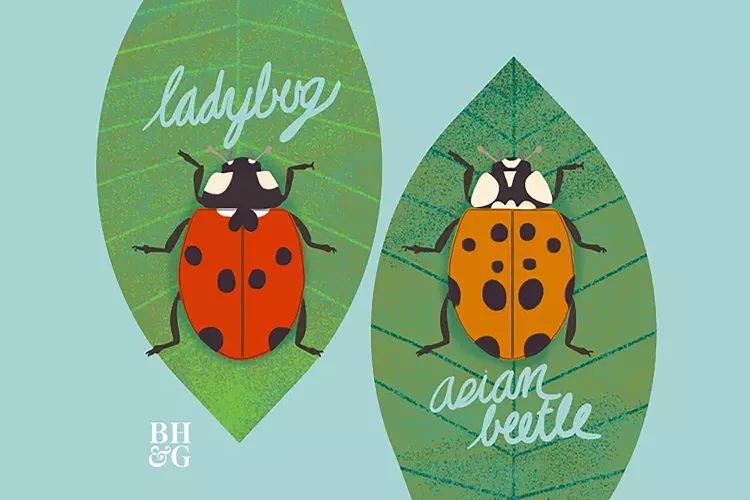Over the past decade, the Osiria rose has been the object of such desire that it has crashed at least one nursery website. It has garnered flowery praise from influential publications. Businesses and Anime fan-fiction creators have adopted its name and image. A few parents even seem to be naming babies after it. But other than its beguiling name, what is it about this rose that has generated all the hype? Before you look for an Osiria rose for your garden or a dozen Osiria roses for Valentine’s Day, here's the surprising story of just how deceiving looks can be, even for something as simple as a rose.
Are Osiria roses real?
The superlative Osiria rose that exists on the internet is not entirely real. As shown in the images above, the true colors of the two-tone flowers on the left don't quite match those in the image on the right that pops up in online searches. But the rose itself is a real variety, which was originally named ‘Nicole’. Thomas Proll, the head rose breeder at Kordes Roses, says his predecessor bred it in the 1970s but it was never really up to their standards for any use, either in the garden or at the florist’s.
“It was indeed never meant to be used as a garden rose but for greenhouse cut flowers only,” says Proll. “It was actually grown in the Netherlands as a florist rose ... but not widely as the vase life is too
short for it to be very successful.”
Neither Kordes or the Dutch grower that released ‘Nicole’ decided to get intellectual property protection on their less than stellar performer. Then one day the product manager for a popular French nursery showed up to the Kordes greenhouses.
“The Willemse France people came once a year looking for new, special, unusual, novelty stuff,” says Proll. "They probably saw the ‘Nicole’ cut flower and considered it to be a good seller with its huge bicolored blooms…and hey, they were right somehow…it’s still alive.”
Willemse France rebranded ‘Nicole’ as Osiria and sold it as a garden rose. It became one of their mainstays. They still sell it in Europe. From the 1980s through the 2000s, it also earned an international reputation for rose show competitions because of its large, well-formed blooms. Then in the 2010s, the digitally altered photos of it and the misinformation went viral online, thanks to the rise of social media and a taste for gothic style à la Game of Thrones.
How to Grow Osiria Roses
Depending on where you live and your experience level growing roses, Osiria could be a challenge. As a florist rose, it was not bred to have a graceful shrubby form with easy-care traits. Proll says its disease resistance is pretty poor even in greenhouse settings. And according to Tom Carruth, a rose breeder known for producing healthy, free-flowering roses, Osiria is a stingy bloomer.
That said, part of the legitimate appeal of Osiria is that it is one of the few almost-modern florist roses that gardeners can grow with effort. And with its incredible digital-era story, it’s one of the true conversation pieces and collector’s roses you might consider for your garden.
If you live in an ideal climate with dry, warm conditions, perhaps in the parts of Texas or Arizona where roses are mass produced, Osiria may not be so hard to grow. Otherwise, it will require extra effort. For this rose to perform well, they need at least six hours of full sun, heavily amended soil, weekly irrigation, regular fertilization, and careful pruning. If you want to go organic and avoid pesticides, you’ll have to pay special care to the growing site and pruning techniques. Give Osiria an open space where it isn’t crowded and prune it to an open vase shape. Avoid watering overhead to minimize diseases.
Osiria roses are usually winter hardy in USDA Zone 7b, so growing them anywhere colder would be an experiment. One of the pleasures of gardening can be growing plants where they supposedly shouldn’t survive. You’ll want to look for your warmest microclimate next to a building or maybe keep Osiria in a large pot and move it into an unheated shed or garage for winter.
Where to Buy Osiria Rose Plants
Few nurseries in North America carry Osiria. It varies from year to year. Unless a big distributor offers it one year, you probably won’t find Osiria anywhere except specialist nurseries that you will need to order from online. If you can’t find a nursery with it in stock, you may want to get involved in rose societies to see if anyone who has it will sell or trade you one. But keep in mind that many smaller nurseries and collectors like own-root roses. For a less robust rose like Osiria, you will want a plant grown on different rootstock to give it extra vigor.
Because Osiria is "rare," some sellers will over-inflate their prices, so definitely do some comparison shopping. If you see Osiria seeds for sale, know that they will not grow into Osiria roses, which are hybrid plants that don't "breed true" from seed. Also beware of supposed Osiria roses in different colors like purple. Osiria is a single rose variety, not a range of roses like Knock Out.
Osiria Rose Alternatives
Osiria is not the only red rose with white edging or white reverse petals. There is a long line of roses with similar coloration, most of them bred specifically to be grown in your garden. If you’re looking for the almost-black velvet look in the doctored Osiria images and don’t care about the white edging, there is also a centuries-old line of dark, velvety varieties to select from.
Red or crimson roses with white edging
‘Baron Girod de L’Ain’: Arguably the all-time classic in this color category, it has large crimson flowers with elegant white edging and a strong perfume rose fragrance. You get exceptional flowers that you can bring in for a vase and a nice shrubby plant that looks good in the garden and can even take a little shade.
Rosie O’Donnell: If you want to stay closer to the shape and color pattern of Osiria, Rosie will give you a garden-worthy plant with red petals and cream-colored undersides.
Love at First Sight: A more recent compact introduction that has flowers similar in color and shape to Osiria’s. In a photo, the bicolor blooms could be mistaken for Osiria at a glance.
Fire N’ Ice: For those looking to stick to the Game of Thrones-esque theme that’s latched onto Osiria, Fire N’ Ice is as close as you’ll get. It’s a time-tested landscape option that will bring you brilliant color for much of the growing season.
Love: The flower color falls a little more on the pink side of red, but Love is a rugged, award-winning classic with bicolor petals.
Deep crimson roses
Ebb Tide: One of the great American roses, it's considered a breakthrough for its deep crimson hue, which leans towards purple and sometimes black velvet. Its color is similar to old once-blooming roses like ‘Cardinal Richelieu’ and ‘Tuscany Superb.’ But it repeat blooms from spring through fall.
‘Souvenir du Dr. Jamain’: This versatile 19th century shrub rose can be grown as a short climber. Unlike its more modern color counterparts, it does best in a little bit of shade.
Black Baccara: Very deep crimson blooms that are shaped similar to Osiria’s. It reportedly has an excellent vase life as a cut flower.
Munstead Wood: If designer rose fragrances are high on your list of priorities, you can’t do better than Munstead Wood. Like Ebb Tide, the flower color can verge on black velvet. It's an easy-to-grow shrub rose and the blooms make good cut flowers.
